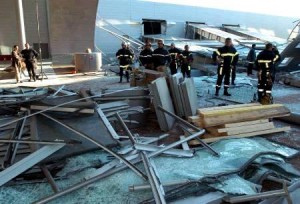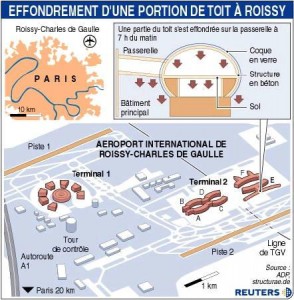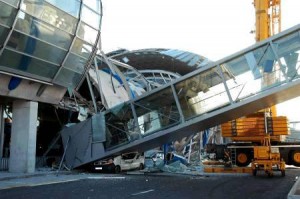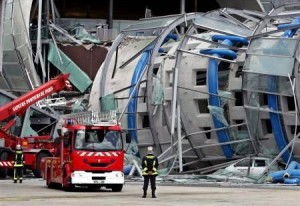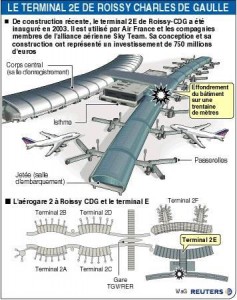At around 6:57 am, part of the pier roof in terminal 2E at Roissy-Charles de Gaulle airport, forming a 650 m long and 33 m wide tunnel made of concrete, glass and steel, collapsed. The bodies of 4 people were found in the rubble (one of whom was unidentified); 3 other people were injured. The accident occurred when most of the early morning flights had already disembarked, the hall was therefore partly deserted. According to witnesses, 5 minutes before the collapse, passengers and security staff noticed the appearance of a crack in the ceiling, in line with the departure lounge. Concrete dust started to fall at the same time as a crack was heard. One member of staff did not have time to warn the control station of the anomaly before the arch suddenly collapsed over a length of 30 m and width of 20 m. An evacuation order was immediately transmitted over the loud-speakers. The “Plan rouge” emergency response scheme was activated, and 250 fire-fighters and 70 vehicles were mobilised. A criminal investigation for “involuntary manslaughter and injury’ was launched and experts were asked to detect any faults in the terminal’s ultra-modern design. The investigation was difficult, as some 400 subcontracted companies had contributed to the terminal’s construction. The next day, the airport’s terminal 2E, where around ten fire-fighters and investigators were working, was evacuated because further cracks were heard in the building’s arched roof.
On 14 february 2005, the Administrative Investigation Commission made its findings public: “the shell had been progressively weakened due to insufficient or incorrectly positioned reinforcements, a lack of mechanical redundancy (possibilities of load transfers to other areas in the event of local failure), weakness of the wall plate (supporting the shell over its whole length) and due to the position of the struts (metal parts supporting the glasswork) within the concrete”.



